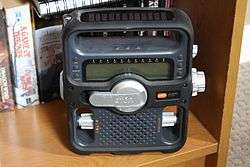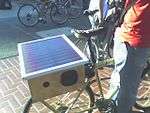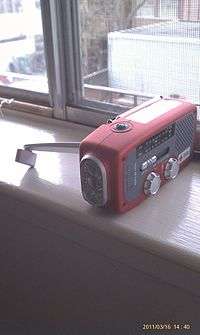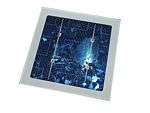Solar-powered radio



A solar powered radio is a portable radio receiver powered by photovoltaic panels.[1] It is primarily used in remote areas where access to power sources is limited.
History
The solar powered radio first came into existence in the 1950s, developed by General Electric. It weighed just 10 ounces and was capable of working without light and recharging. It contained seven solar cells, four transistors and a small battery.[2] In 1954, Western Electric began to sell commercial licenses solar powered radio, including other photovoltaic technologies.[3]
Advantages
Solar powered radios eliminate the need to replace batteries, which makes operating them cost much less. Since they don't require plugs, they can be used in areas where there is no electrical grid or generators.[4] As a result, people in remote areas with little disposable income can have equal access to news and information. Informative radio programs on human rights, women’s rights, the importance of education (especially for girls), HIV and AIDS, animal husbandry, agriculture, food security, combined with solar powered radios, can be a powerful tool for improving the lives of people in remote areas.[5]
References
- ↑ "Solar Powered Radio". earthship.org. Retrieved 2011-07-02.
- ↑ "Blast from The Past – Solar Powered radio From the 50's". ecofriend.com. Retrieved 2011-07-02.
- ↑ "The History of Solar Energy A Look at Uses of Solar Energy from BC to IT" (PDF). seia.org. Retrieved 2011-07-02.
- ↑ "Solar Powered Radios Can Help". greentechblog.org. Retrieved 2012-12-20.
- ↑ "Rural radios and participatory communication" (PDF). fao.org. Retrieved 2011-07-02.
